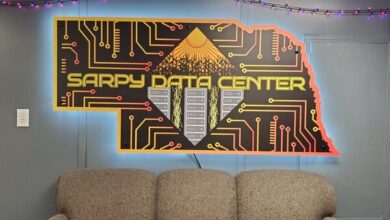Insider Tips for Implementing Payroll Solutions Effectively

Introduction to Implementing Payroll Solutions
In the age where strategic resource management has become a key competitive advantage, the payroll system stands out as an integral component that can either make or break overall business effectiveness. This complex mechanism rewards the workforce and ensures compliance with varying tax jurisdictions and benefits administration. To thrive amid regulatory complexities and dynamic market conditions, businesses increasingly turn to comprehensive payroll solutions that promise relief from traditional administrative burdens. With the right approach, integrating these solutions can streamline operations, mitigate risks, and provide a clear path towards sustainable growth.
Advantages of Automated Payroll Systems
The transition to automated payroll systems heralds many advantages modern businesses cannot overlook. Foremost among these is the remarkable precision and efficiency the technology offers, drastically reducing the time spent on manual calculations and the risk of human error. Automated systems shine in their ability to adhere to the complex tapestry of tax laws, ensuring that businesses stay compliant and mitigate the risk of costly mistakes. However, the benefits are not solely procedural; they extend to shaping a culture of transparency and trust within the organization.
Critical Features of Effective Payroll Software
For a payroll system to be truly beneficial, it needs to encapsulate critical features that solve real-world business challenges. The hallmark of impactful payroll software lies in its capacity for integration. The system should play well with other essential software suites, such as HR management tools, accounting platforms, and time-tracking applications. This creates an interconnected ecosystem that drives efficiency. Additionally, robust payroll software must come with ironclad security measures to protect the sensitive data of the company and its employees from cyber threats—a significant concern in the digital era. Seamless tax compliance, user-centric design for ease of use, and robust analytical tools for audit and reporting purposes are equally paramount, providing businesses the dual benefits of operational transparency and insightful data to make informed decisions.
Leveraging Cloud-Based Payroll for Operational Flexibility
The embrace of cloud technology has made it one of the most significant milestones in the evolution of payroll processing. With cloud-based solutions, businesses gain the flexibility needed to handle payroll operations from any location with internet access, a must-have feature in our increasingly remote and mobile work environments. This seamless accessibility is not just a matter of convenience; it’s a core facet of operational agility, allowing businesses to adapt rapidly to market shifts and workforce changes. Scalability is another crown jewel of cloud-based payroll systems, ensuring that as a business expands or experiences workforce fluctuations, the payroll process is unimpeded, continuously running as smoothly as a well-oiled machine.
Essential Steps for Choosing a Payroll System
Refining the methods for selecting the optimal payroll system can influence a company’s payroll management success. The journey necessitates a clear understanding of the enterprise’s requirements, rigorous assessment of software available in the market, and careful consideration of which features match the specific payroll needs. A robust payroll system must offer a seamless user experience, comprehensive reporting, and adaptability to regulatory changes. Moreover, the degree of customer support and expertise provided by the provider plays a significant role, as they indicate the level of assistance one can expect during and post-integration. Enterprises should aim for a payroll partner that ensures a smooth transition and ongoing support, positively impacting the business’s operational capabilities.
Maintaining Compliance with Payroll Regulations
Compliance is the cornerstone of an organization’s payroll framework, and non-compliance can lead to severe financial penalties and damage to corporate reputation. Payroll solutions are designed to ease this compliance burden by offering automated updates to tax tables and regulatory changes, providing real-time alerts for potential issues, and simplifying the end-of-year reporting processes. Effective payroll systems become the first line of defense in staying up-to-date with ever-shifting compliance demands and maintaining error-free records, thus giving business leaders peace of mind and allowing them to focus on growth-centric activities.
Enhancing HR Management with Integrated Payroll
Integrating payroll systems within the human resources management framework can lead to remarkable enhancements in operational efficacy. This synchronization allows for a centralized employee information database, facilitating streamlined onboarding procedures, salary increments, and benefits management. The boundless benefits also spread into employee engagement, with the availability of self-service features that hand employees control over their personal information, fostering a culture of empowerment and transparency. As such, integrated payroll systems become a nexus for enhancing the employee experience, optimizing administrative workflows, and fortifying the department’s strategic function.
Addressing Challenges in Payroll Implementation
Integrating a new payroll system is a significant undertaking that can be met with numerous challenges, including the secure transfer of sensitive data, ensuring compatibility with other systems, and achieving user buy-in. To navigate these trials, it’s crucial to build a comprehensive implementation plan, foster a culture of open communication, and involve key stakeholders from the outset. Additionally, meticulous training sessions can equip users with the necessary skills to fully leverage the system’s capacities. Understanding and preemptively planning for these common roadblocks can lay the groundwork for a seamless transition and help mitigate the risks associated with payroll system implementation.
Embracing Future Innovations in Payroll Technology
Payroll technology is set for a quantum leap from breakthroughs like artificial intelligence(AI) and machine learning. Such technologies are expected to introduce an era of intuitive payroll systems capable of predicting trends, identifying discrepancies before they become issues and personalized employee experiences. The future of payroll is not just automation for efficiency; it’s about intelligent systems that can adapt and evolve with the organization. Staying attuned to these innovations and incorporating them into payroll processes can thrust businesses forward into the new paradigm of workplace technology management.
The Final Step: Launching Your Selected Payroll Provider
With careful provider selection comes the culminating task of rolling out a new payroll service—a process that should be executed with precision and foresight. This crucial phase involves setting clear implementation timelines, configuring the system to align with company workflows, and engaging in thorough system testing to ensure optimal performance. A strategic launch should be complemented by ongoing assessments to fine-tune the system, thus enabling companies to harness the full benefits of their chosen payroll solution. Successfully achieving this final step signifies not merely a change in financial administration but a progressive shift toward an advanced, data-driven approach to business management.
Efficient and effective payroll management remains imperative in the broader context of business operations. Implementing the right payroll solution transcends administrative necessity—it becomes a beacon of trust and reliability for employees, a keystone for regulatory alignment, and a catalyst for strategic business growth. As organizations navigate contemporary business complexities, an optimized payroll system provides a solid foundation, propelling them toward operational excellence and long-term success.




